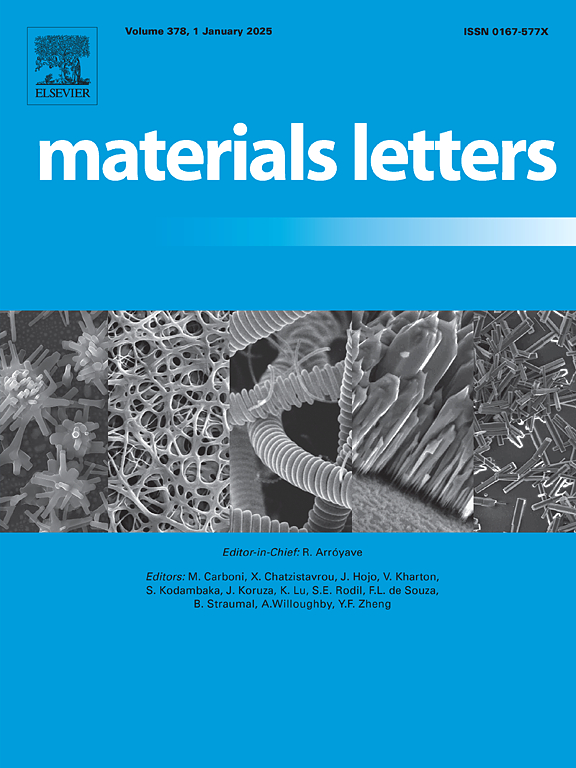Perspective on high-entropy alloys and high-entropy nitrides as diffusion barriers for copper metallization
IF 2.7
4区 材料科学
Q3 MATERIALS SCIENCE, MULTIDISCIPLINARY
引用次数: 0
Abstract
The adoption of copper as the material of choice for electrical contacts in the semiconductor industry over three decades ago has been a key enabling factor for continuing the miniaturization trend that has led to faster and more efficient chips with specific functionalities. From the advanced packaging level where hybrid bonded structures are integrated in 3D with features sub-10 μm, to the front end of the line with dimensions sub-10 nm, the use of copper for signal and power transmission poses the risk of electromigration into the nearby dielectric or into silicon. This risk is currently mitigated by using diffusion barriers, thereby enabling significant improvements in the reliability and lifetime of the contacts. The diffusion barrier currently used in the semiconductor industry is a layer of TaN that can be at least ∼ 3 nm. However, TaN is not a substrate that naturally allows for the conformal growth of copper, so surfactants (liner materials) need to be added so that metallic copper can be deposited/electroplated into vias. While the dimensions and performance of the diffusion barrier are more critical close to the front of the line (FEOL), any material advances can also be leveraged to mitigate fabrication and alignment constraints faced at the back end of the line (BEOL) and the advanced packaging level. The present paper gives an account of the possible alternatives for the copper diffusion barrier, highlighting mainly high-entropy alloys (HEAs) and high-entropy nitrides (HENs). The promise of these materials as efficient barriers relies either on the absence of grain boundaries in amorphous HEAs that would act as fast diffusion avenues for copper, or on the presence of small interstitial spaces and high vacancy formation energies (in HENs) that hamper diffusion. We also mention a more drastic direction that may emerge in the future, in which copper could be replaced by other metals or intermetallic compounds.
高熵合金和高熵氮化物作为铜金属化扩散屏障的研究进展
三十多年前,半导体行业采用铜作为电触点的首选材料,这是持续小型化趋势的关键促成因素,这种趋势导致了具有特定功能的更快,更高效的芯片。从特征小于10 μm的混合键合结构集成在3D中的高级封装级别,到尺寸小于10 nm的线前端,使用铜进行信号和电力传输存在电迁移到附近介电介质或硅中的风险。目前,通过使用扩散屏障可以降低这种风险,从而显著提高触点的可靠性和使用寿命。目前在半导体工业中使用的扩散屏障是一层TaN,其厚度至少可以达到~ 3nm。然而,TaN不是一种自然允许铜保形生长的衬底,因此需要添加表面活性剂(衬里材料),以便金属铜可以沉积/电镀到过孔中。虽然扩散屏障的尺寸和性能在接近生产线前端(FEOL)时更为关键,但也可以利用任何材料的进步来减轻生产线后端(BEOL)和先进封装级别面临的制造和对准限制。本文介绍了铜扩散屏障的可能替代品,重点介绍了高熵合金(HEAs)和高熵氮化物(HENs)。这些材料作为有效屏障的前景,要么依赖于非晶HEAs中没有晶界,这将作为铜的快速扩散途径,要么依赖于小间隙空间和高空位形成能(在hen中)的存在,这阻碍了扩散。我们还提到了未来可能出现的一个更为激烈的方向,即铜可能被其他金属或金属间化合物所取代。
本文章由计算机程序翻译,如有差异,请以英文原文为准。
求助全文
约1分钟内获得全文
求助全文
来源期刊

Materials Letters
工程技术-材料科学:综合
CiteScore
5.60
自引率
3.30%
发文量
1948
审稿时长
50 days
期刊介绍:
Materials Letters has an open access mirror journal Materials Letters: X, sharing the same aims and scope, editorial team, submission system and rigorous peer review.
Materials Letters is dedicated to publishing novel, cutting edge reports of broad interest to the materials community. The journal provides a forum for materials scientists and engineers, physicists, and chemists to rapidly communicate on the most important topics in the field of materials.
Contributions include, but are not limited to, a variety of topics such as:
• Materials - Metals and alloys, amorphous solids, ceramics, composites, polymers, semiconductors
• Applications - Structural, opto-electronic, magnetic, medical, MEMS, sensors, smart
• Characterization - Analytical, microscopy, scanning probes, nanoscopic, optical, electrical, magnetic, acoustic, spectroscopic, diffraction
• Novel Materials - Micro and nanostructures (nanowires, nanotubes, nanoparticles), nanocomposites, thin films, superlattices, quantum dots.
• Processing - Crystal growth, thin film processing, sol-gel processing, mechanical processing, assembly, nanocrystalline processing.
• Properties - Mechanical, magnetic, optical, electrical, ferroelectric, thermal, interfacial, transport, thermodynamic
• Synthesis - Quenching, solid state, solidification, solution synthesis, vapor deposition, high pressure, explosive
 求助内容:
求助内容: 应助结果提醒方式:
应助结果提醒方式:


